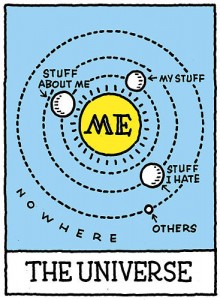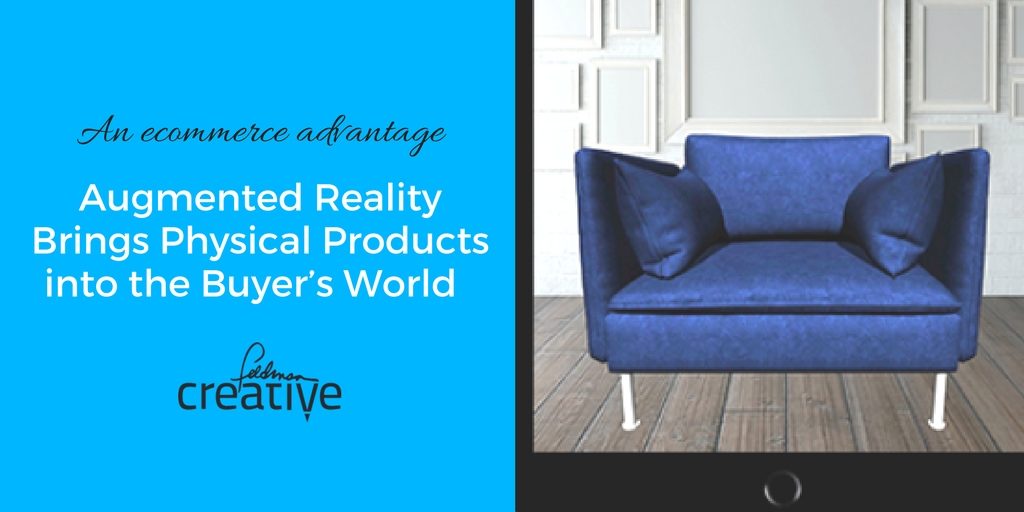 Do you love yourself? Sweet. It’s a great quality. Likewise, it’s great to believe in your company and what your company does well. However, the lessons learned from your self-esteem endeavors have their place.
Do you love yourself? Sweet. It’s a great quality. Likewise, it’s great to believe in your company and what your company does well. However, the lessons learned from your self-esteem endeavors have their place.
Your home page ain’t it.
Why are you still reading this article?
It’s about you. So far, I’ve alluded to you, the subject of this article I wrote for you, about your website, ten times (not including this sentence). Not a word about me.
Oh sure, I could tell you about myself, Barry the freelance copywriter, Feldman Creative the content marketing experts, my experience, my accomplishments, and my clients. While we’re loving on me, I could tell you about my affection for guitars, tennis rackets and things with strings. But you haven’t asked me to.
And let me make this clear: I don’t want to risk losing you. We just met. Who knows? Our relationship might take us to some amazing places. So let’s get back to that problem you’re having with your website.
You’re focusing on you.
Most companies do it. They don’t even realize it’s wrong. However, if they measure and analyze their bounce rate (the percentage of site visitors that leave without clicking anything), they do realize they have a problem.
Don’t beat yourself up about it. Just fix it.
When you start the conversation talking about yourself you turn people off. If they can bail, they do.
The secret to turning them on is very simple, but so misunderstood. You talk about them. You employ the power of “you.”
Your new website visitor just described their problem by entering some version of it in Google. Or maybe your great reputation earned you a referral. In either case, one reality looms ginormous.
Your website visitor has a problem.
The good news? You probably have the solution. And the reason you have a website to begin with is you want people like this to learn more about it and buy it.
So here’s what you do: assure them they belong here at your site. Make it clear you get their problem. Make it clear you want to help. You do this with headlines, photos, illustrations, videos, diagrams, invitations, offers, and more.
Let’s look at how to lose them from the start.
Sadly, most websites provide very good examples of how to turn-off and turn-away prospects. Scraping together examples to share with you certainly wasn’t hard. In fact, I just turned to a small sample of clients I’m doing websites for right now. Forgive me for the edits I made in the name of anonymity. I didn’t want to have to grovel my way back to my clients’ good graces. I want to (and I will) help them understand why their home page is a turn-off.
Example 1:
Software development
The “before” version of a site I recently rewrote read like this:
COMPANY senior level team is comprised of professionals who have worked with the world’s leading technology, advertising and design companies. Our “get it done” philosophy is why much of our work is repeat business from happy clients. Our goal is to establish a strategy that is tailored to your company’s goals, objectives and budget.
Did you see how the “us” thing trumped the “you” voice in every way? Did you feel any sensitivity the company understood your challenge? Did you even feel they recognized you were there? This self-congratulatory approach is more dreadful than a resume. If you were looking for a reason to keep reading, click something, or capitalize on an offer, clearly you’re going to have to keep looking.
Example 2:
Personal assistant services
This company made it abundantly clear in the first sentence as to which company they wanted to talk about.
Our network is vast, our ideas are unique and our delivery is prompt. If it can be done, we can do it. We are boutique firm, which opened in 2005 dedicated to any project you just don’t have time for.
They’ve managed to stay open 7 years now. Wow. One has to assume they are more customer-centric offline. As a side note, if a test of a good home page is “assure your customer they’ve come the right place,” they failed gloriously. They seem to suggest they can solve any problem. Ever met a company like that?
Example 3:
Law firm
I hear this all the time, especially from professional services firms, “These online marketing strategies sound good, but things work differently in our business.” (Vapor escapes from the consultant’s ears.) It’s hard to help naïve business owners such as this, but as you’re about to see, the obvious place to start would be their pointless home page copy.
Founded in 1994, COMPANY is a full-service (specialty) law firm with vast experience and expertise in all aspects of (specialty) law and litigation. Throughout its history, the firm and its attorneys have represented (third person reference to client types) ranging from individuals to multinational corporations, and over the course of this time, COMPANY has helped successfully negotiate and complete hundreds of millions of dollars worth of (category).
Ouch. Not a “you” in sight. I’d like to ask you to wake up now. We’re going to look at how you do engage your customers.
The most important lesson I can offer you.
Even if you elect not to hire a great copywriter to work on your website (which is a mistake), I beg you to look at it from the point of view of the visitor—especially your home page.
I’m trying to do this in this article. I’m thinking—and writing—about your challenge. What is it? You want people to “get into” your website. Remind yourself why they are there. It’s not to read about you.
I’ve written a lot about what not to do and shown you examples of the “we, we, we” epidemic that plagues most websites. By now, you’ve bought in. If you haven’t, you have no business reading this deep into the article. (And you probably should fess up to the fact that you have no business thinking your website is a marketing tool for you company).
But since you’re still here and my lesson is sinking in, let’s agree that what every woman who visits your site DOES care is herself and every man, himself.
So what are you going to do turn ‘em on… to get them into your site, into a conversation, in your sales funnel?
You are going to understand why they showed up at your website and come up with some version of “You have this challenge? Right this way please. How can we help you?”
Soon after you discover who your website is for, you’ll discover what it can do for your business.
This “pointer” is one of “21 Pointers to Sharpen Your Website,” which will help you understand how to make your site more effective (and is available here for free).


![How to Write Powerful Headlines for Your Online Content [Infographic] How to Write Powerful Headlines for Your Online Content [Infographic]](https://feldmancreative.com/wp-content/uploads/2019/04/Screen-Shot-2019-04-19-at-5.38.54-PM.png)



Comments
Sean Carty
Way to stick it to us! The power of YOU was never before so clearly and sharply brought to light. Awesome tip 🙂
Danielle
A powerful and inspiring piece of writing, thanks!